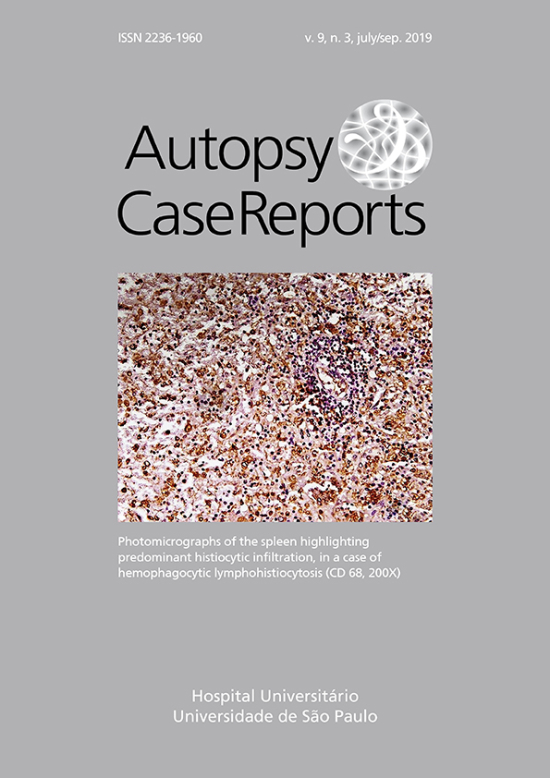High-grade B-Cell lymphoma with MYC and BCL6 rearrangements associated with Richter transformation of chronic lymphocytic leukemia
DOI:
https://doi.org/10.4322/acr.2019.090Keywords:
Leukemia, Lymphocytic, Chronic, B-cell, Lymphoma, Non-Hodgkin, Large B-cell, Diffuse, CytogeneticsAbstract
Richter transformation (RT), or Richter syndrome, is defined as the transformation of chronic lymphocytic leukemia (CLL) to an aggressive B-cell lymphoma. The vast majority, up to 99%, transform into diffuse large B-cell lymphoma (DLBCL), with a small subset (<1%) becoming classical Hodgkin lymphoma. Approximately half of RT cases progress through a pathway involving dysregulation of C-MYC. High-grade B-cell lymphoma (HGBL) is a recent diagnostic category of aggressive B-cell lymphomas set forth in the updated 2017 WHO Classification of Hematopoietic and Lymphoid Tissues. HGBL with MYC and BCL2 and/or BCL6 rearrangements, formerly “double-hit” and “triple-hit” lymphomas, comprise the majority of HGBL cases. Patients with HGBL have a worse prognosis than those with diffuse large B-cell lymphoma. We present a case of RT with rearrangements of MYC and BCL6. To our knowledge, there are no reported cases of RT with a “double-hit” lymphoma genotype.
Downloads
Published
Issue
Section
License
Copyright
Authors of articles published by Autopsy and Case Report retain the copyright of their work without restrictions, licensing it under the Creative Commons Attribution License - CC-BY, which allows articles to be re-used and re-distributed without restriction, as long as the original work is correctly cited.



